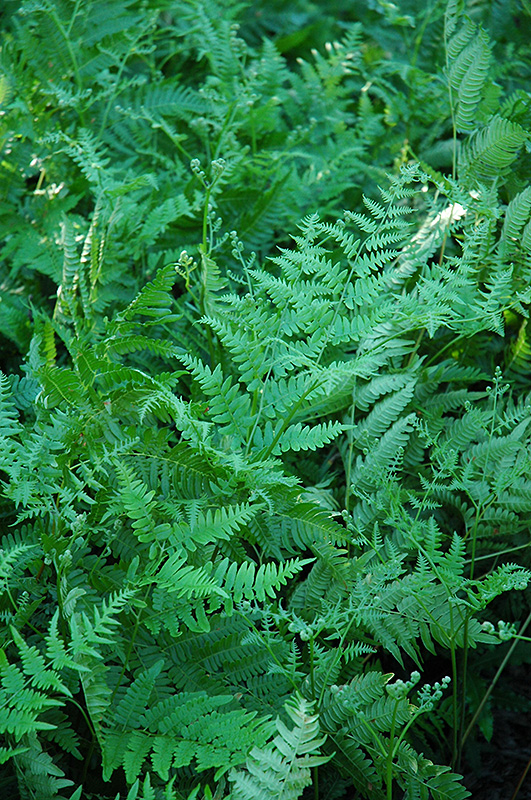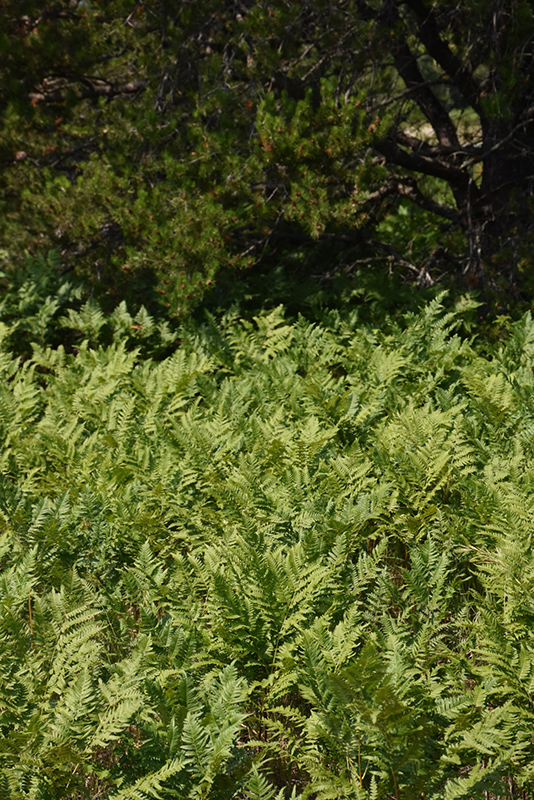Height: 4 feet
Spread: 3 feet
Sunlight:
![]()
![]()
![]()
Hardiness Zone: 2b
Other Names: Fiddlehead Fern
Ornamental Features
Bracken Fern is primarily valued in the landscape or garden for its cascading habit of growth. Its ferny compound leaves remain green in colour throughout the season.
Landscape Attributes
Bracken Fern is an herbaceous fern with a shapely form and gracefully arching fronds. Its relatively fine texture sets it apart from other garden plants with less refined foliage.
This plant will require occasional maintenance and upkeep, and should be cut back in late fall in preparation for winter. Gardeners should be aware of the following characteristic(s) that may warrant special consideration;
- Invasive
Bracken Fern is recommended for the following landscape applications;
- Mass Planting
- Groundcover
- Naturalizing And Woodland Gardens
Planting & Growing
Bracken Fern will grow to be about 4 feet tall at maturity, with a spread of 3 feet. It grows at a fast rate, and under ideal conditions can be expected to live for approximately 20 years. As an herbaceous perennial, this plant will usually die back to the crown each winter, and will regrow from the base each spring. Be careful not to disturb the crown in late winter when it may not be readily seen!
This plant performs well in both full sun and full shade. It prefers to grow in average to moist conditions, and shouldn't be allowed to dry out. It is particular about its soil conditions, with a strong preference for rich, alkaline soils. It is highly tolerant of urban pollution and will even thrive in inner city environments. This species is native to parts of North America, and parts of it are known to be toxic to humans and animals, so care should be exercised in planting it around children and pets. It can be propagated by division.


